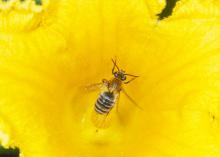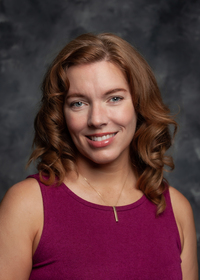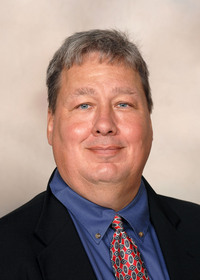Information Possibly Outdated
The information presented on this page was originally released on June 7, 2012. It may not be outdated, but please search our site for more current information. If you plan to quote or reference this information in a publication, please check with the Extension specialist or author before proceeding.
Boost pollinators with bee-friendly gardens
MISSISSIPPI STATE – They help cucumbers grow straight, increase fruit yields and make the colorful fields of flowers possible -- they are pollinators, and a few simple plantings can make a home garden a haven for these important creatures.
“Most people understand the role pollinators play in moving pollen from flower to flower to create fruit, but they think honeybees are the only insects that do the job,” said Audrey Sheridan, entomology research associate and beekeeper with the Mississippi Agricultural and Forestry Experiment Station and Mississippi State University Extension Service. “Honeybees are important, but there are many pollinating animals, including birds, butterflies, bats, beetles, flies, wasps and even geckos.”
Sheridan said native bees, such as bumblebees, blue orchard mason bees and Southeastern blueberry bees pollinate different plants in the landscape. Variety in the garden helps keep local pollinators healthy.
“Native bees tend to be what we call specialist pollinators,” she said. “The shape and length of their tongues and the amount and location of the branched, pollen-collecting hairs on their bodies are adapted to particular types of flowers. Examples include the squash bee and the Southeastern blueberry bee.”
Bees can thrive in urban and suburban areas because of the wide variety of flowering plants that bloom throughout the year, Sheridan said.
“A garden that blooms in every season provides a constant supply of forage for bees, though a single garden can’t provide enough nectar for even one hive of honeybees,” she said. “They will roam in about a 2- to 3- mile radius to find adequate resources.”
Honeybees favor herbs and see blue and white flowers best, Sheridan said.
“Russian sage, lavender, chamomile, rosemary and basil are attractive to bees, and not to pests, which makes them good additions to any garden,” she said. “Yellow and light pink flowers or flowers with yellow centers, such as thyme, tansy, dill and echinacea, are popular with bees, too.”
Native plants can be attractive to both native bees and honeybees.
“Mississippi has a long season for pollen- and nectar-producing plants, which is a great advantage for all kinds of bees,” Sheridan said. “In spring, foam flower, false indigo, red maple and redbud give bees a nectar flow after the winter dearth. In summer, sunflowers, butterfly weed, swamp milkweed and Joe Pye weed will attract all kinds of pollinators to your garden.”
MSU Extension horticulturist Gary Bachman said plants with tubular flowers are a must if gardeners want to see more butterflies and hummingbirds flying around.
“Tubular flowers hold more nectar,” he said. “As hummingbirds and butterflies feed, they have to probe the flower for the nectar, and in the process, they pick up pollen and transfer it to the next flower. The color red is particularly attractive to hummingbirds.”
Bachman said a pollinator garden should include catmint, red hot poker, bee balm, nasturtium, honeysuckle and butterfly weed, the Mississippi Medallion native plant winner for 2012.
National Pollinator Week is June 18-24, so celebrate by planting something that benefits local pollinators.
The Pollinator Partnership shares information about pollinators at http://www.pollinator.org.










